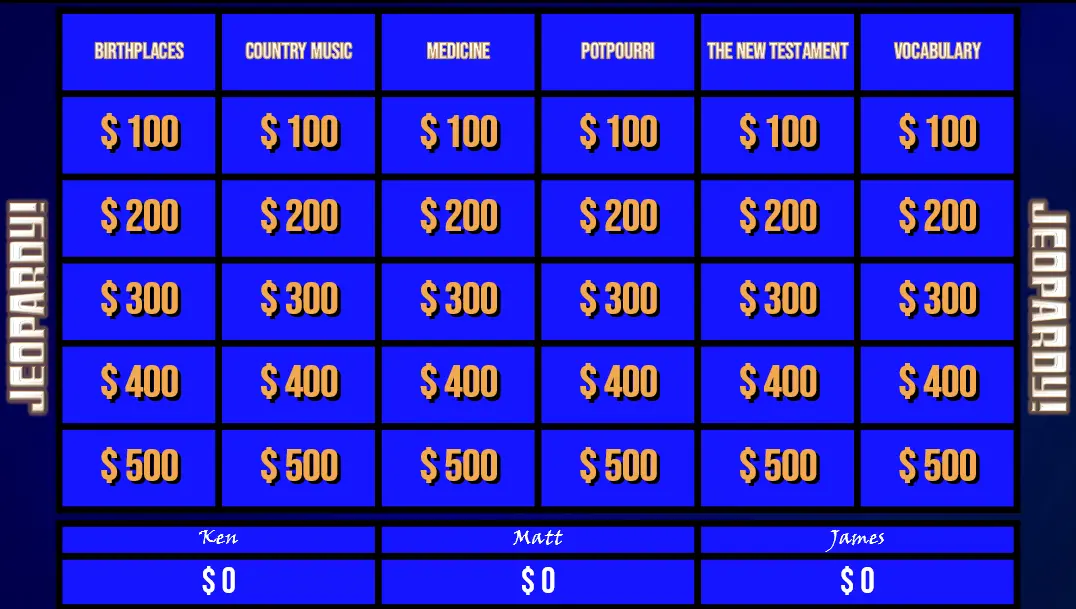I built a fun, fast, TV-level playable version of Jeopardy! using only PowerPoint and Excel, with Visual Basic for Applications (VBA) doing the heavy lifting.
Historical/Archival Jeopardy! Games
My solution includes a large database of actual Clue/Response pairs from historical games. You can specify a game number or air date to select a game, or use “random” and let the system choose a historical game for you.
Excel as a “sidecar” file: play a “real” TV game? Or make up your own!
The historical game data is included on a worksheet within the Excel file. You can use it to choose an archival game (by specifying a game number, or air date, or simply “random”), or you can quickly enter your own Clue/Response pairs, and dollar values, if you want to build a game that reflects trivia for your family, friends, etc. It is MUCH easier and quicker to create your own game in this Excel file than it is to do the same within the PowerPoint editor.
Whichever you do, either a historical game or a “roll your own”, loading from the prepared sidecar Excel file into the PowerPoint deck is as simple as using standard Windows File Open dialog box to specify the Excel file you would like loaded.
Lightning-Fast Play
The game-master navigates the game by simply clicking on-screen targets. This point-click is done on the presenter’s screen, so the players never see the cursor, sparing them the distraction.
For example: a player chooses “Potpourri for $600”. The Game Master clicks on this box/target on the game grid and the presentation immediately jumps to the slide containing that Clue. A return to Game Grid target, subtly visible at the bottom of every clue slide, can be clicked to return to the Game Grid.
Wagers! Bets! Daily Doubles!
Daily Doubles are randomly assigned when the game is loaded from the Excel sidecar file into the PowerPoint slide deck. This assignment has a bias that matches the known historical bias of Daily Double locations in the TV game.
When a Daily Double is encountered, the game first advances to an intermediate slide so that the player’s desired wager can be entered. Once the Game Master has entered this wager, a click jumps to the appropriate clue slide. On that clue slide, only the wagering player can score, and the amount available is the wagered amount.
Sound Effects!
Players enjoy the same sound effects (SFX) as on the show: Opening Theme Music, Board Values Appear, Daily Double Hit, “Think Music”, End of Game Music. Plus some additional non-TV sounds that provide confirmation when scoring: Correct Answer, and Incorrect Answer.
Timers!
Visual on-screen timers for both buzzed-in timer (5 seconds) and Final Jeopardy (30 seconds). These timers are initiated with a simple click by the Game Master.
Which player has control of the board? The Game keeps track of this for you!
The player in control is always clearly indicated with a green highlight on their name within the Scoreboard. I found it was easy for the Game Master to lose track of who has control of the board; also I heard that the TV Game Master (Ken Jennings, Alex Trebek R.I.P.) has/had some visual indication (not visible to the TV cameras) to help him keep track of this.

